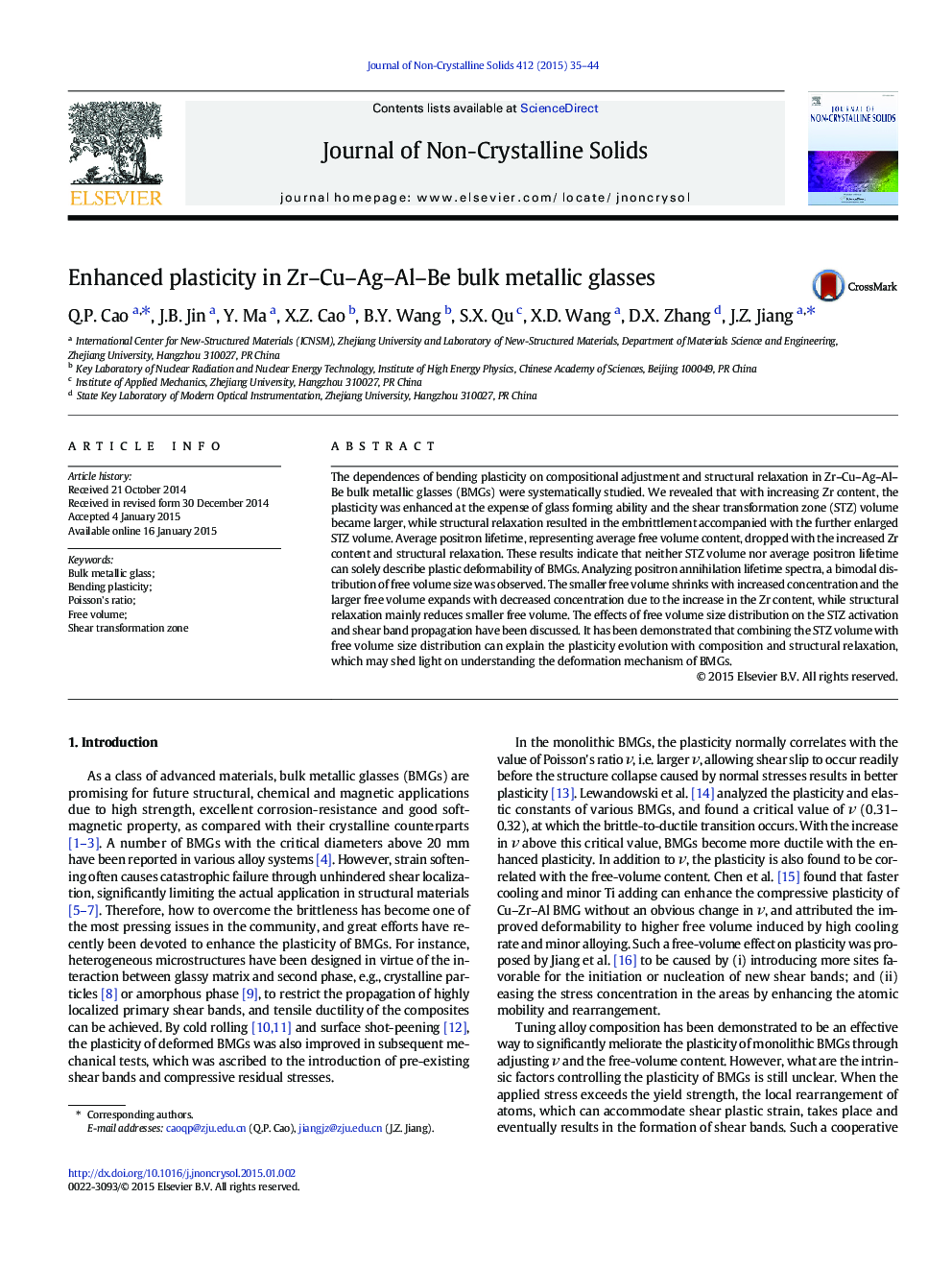| Article ID | Journal | Published Year | Pages | File Type |
|---|---|---|---|---|
| 1480832 | Journal of Non-Crystalline Solids | 2015 | 10 Pages |
•Effects of composition and relaxation on plasticity in Zr-based BMGs were studied.•Shear transformation zone (STZ) volume was determined by nanoindentation tests.•A bimodal distribution of free volume size was observed.•Plasticity depends on both STZ volume and free volume size distribution.
The dependences of bending plasticity on compositional adjustment and structural relaxation in Zr–Cu–Ag–Al–Be bulk metallic glasses (BMGs) were systematically studied. We revealed that with increasing Zr content, the plasticity was enhanced at the expense of glass forming ability and the shear transformation zone (STZ) volume became larger, while structural relaxation resulted in the embrittlement accompanied with the further enlarged STZ volume. Average positron lifetime, representing average free volume content, dropped with the increased Zr content and structural relaxation. These results indicate that neither STZ volume nor average positron lifetime can solely describe plastic deformability of BMGs. Analyzing positron annihilation lifetime spectra, a bimodal distribution of free volume size was observed. The smaller free volume shrinks with increased concentration and the larger free volume expands with decreased concentration due to the increase in the Zr content, while structural relaxation mainly reduces smaller free volume. The effects of free volume size distribution on the STZ activation and shear band propagation have been discussed. It has been demonstrated that combining the STZ volume with free volume size distribution can explain the plasticity evolution with composition and structural relaxation, which may shed light on understanding the deformation mechanism of BMGs.
